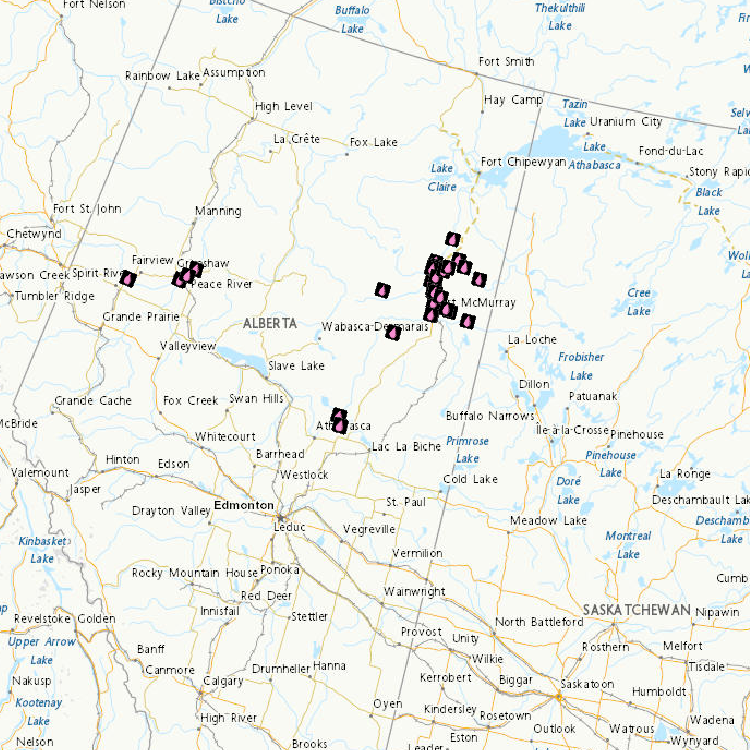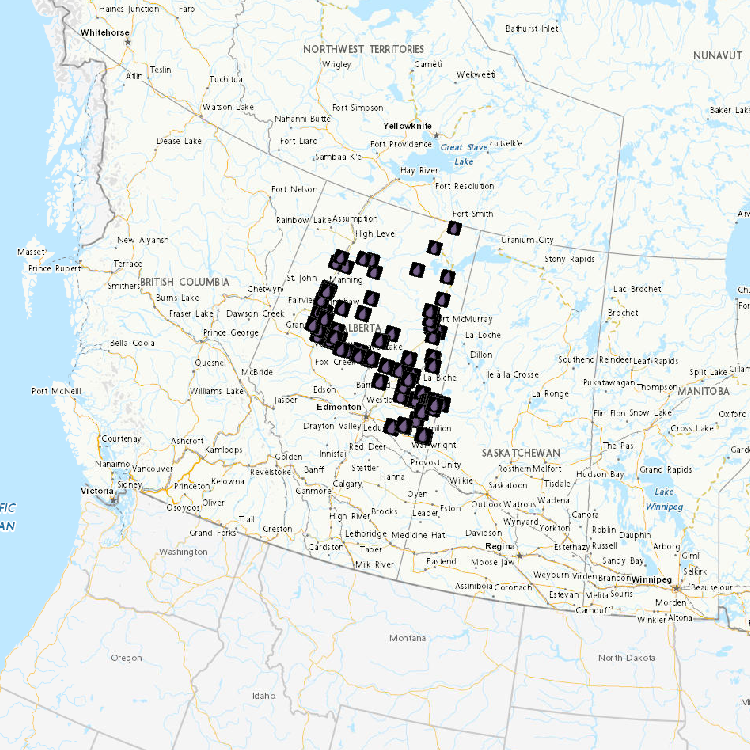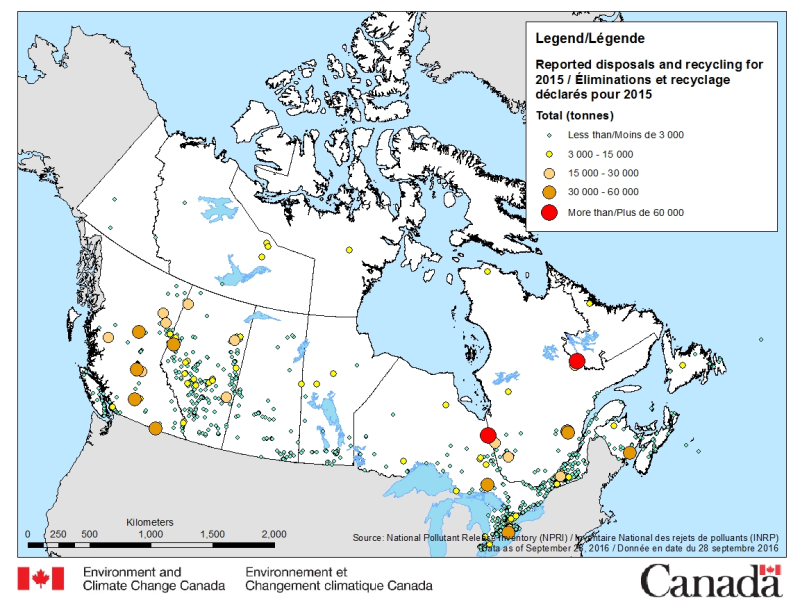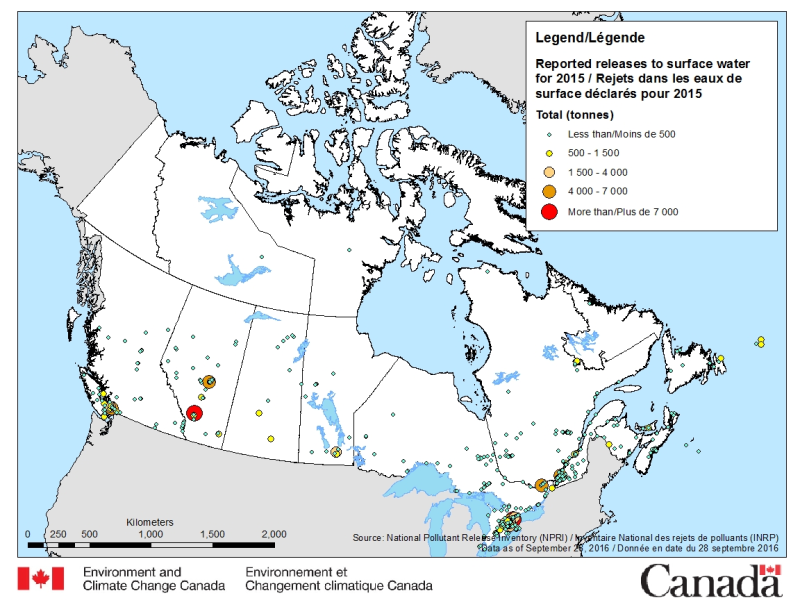Assess Toxicity, Manage and Monitor for Environmental Presence of Hazardous Substances and Waste
Type of resources
Available actions
Topics
Keywords
Contact for the resource
Provided by
Formats
Representation types
Update frequencies
status
-

Benthic invertebrates monitoring includes both lotic (rivers/streams) and lentic (wetlands) ecosystems. Aquatic biomonitoring provides a direct measure of change in biotic populations and communities in relation to benchmark or reference conditions and can help identify the ecological effects of cumulative stressors. Used together with the water chemical and physical monitoring components, this program uses an integrated approach to assess whether ecological affects are occurring in response to OS developments. Sampling can include the collection of invertebrates, algal biomass, water chemistry, and appropriate supporting habitat information and is conducted during periods of high abundance and diversity of macroinvertebrates. Sampling focuses on near-shore gravel and sand habitats on the Athabasca River, erosional habitats on major tributaries and in wadable areas in deltaic wetlands within the Expanded Geographical Area. As of October 2012, over 80 locations have been visited.
-

The objectives of the fish component of the integrated oil sands monitoring program are to provide the necessary data/information to address key questions related to both environmental health of fish populations and fish health issues that can be used to inform human use and consumption. The questions underlying the fish monitoring design are related to the status and health of wild fish populations in the Lower Athabasca River including and in an expanded geographical extent. Data is being collected to provide a baseline against which future changes in fish populations will be evaluated, and compared to data from historical studies to assess change over time to the current state. Data is also being collected in areas of new oil sands development, to develop baseline data for future site-specific comparisons, contribute to an expanded geographic basis of the overall monitoring plan, and contribute to an improved ability to examine cumulative effects.
-

Monitoring activities have collected bulk suspended sediment samples using continuous flow centrifuges and Phillips Tube samplers in the Lower Athabasca River and tributaries respectively. Further, in the absence of pre-development monitoring for this region, high fidelity dated lake sediment cores were used to assess the natural range in contaminant deposition to this region and to obtain a historical perspective of contaminant loadings. All sediments (suspended river and lake cores) have been analyzed in the laboratory for sediment quality variables as per Appendix B in the Integrated Monitoring Plan (cores were also analyzed for paleo indicators of ecosystem health such as diatoms). In addition, as the Lower Athabasca river bed sediments are known to shift and migrate downstream, bathymetric maps of the bed-channel morphology over time was also completed. This will allow for estimates of bed sediment transport downstream for the period of survey, and be useful in calibration/validation of sediment and contaminant numerical transport models.
-

The surface water quality (WQ) program, as part of the Joint Canada/Alberta Implementation Plan, is designed to improve the ability to detect change and predict effects in relation to point and non‐point sources. A mass‐balance approach has been used for assessing the quantity, movement, and cycling of materials in the watershed. Applying this approach required a sampling program which included quantification of the sources, transport, flux, and fate of materials and contaminants. The Surface WQ monitoring sampling includes, in part, collection of; - event (freshet and rain) based WQ samples in tributaries ranging from daily to bi-weekly, - WQ samples in the Athabasca River using cross-channel transect methods at specified Phase 1 sites, - enhanced (additional parameters) WQ sampling at M9, M12, and M11A and at 5 new interconnecting channel stations within the Expanded Geographical Area (EGA), - ground water samples in specific high priority tributaries, and - auto-monitoring (near real-time) on a subset of parameters at sites in the EGA
-

The Canadian Environmental Sustainability Indicators (CESI) program provides data and information to track Canada's performance on key environmental sustainability issues. The Water quality in Canadian rivers indicators provide a measure of the ability of river water across Canada to support plants and animals. At each monitoring site, water quality data are compared to water quality guidelines to create a rating for the site. If measured water quality is below the guidelines, it can maintain a healthy ecosystem. Water quality at a monitoring site is considered excellent when substances in a river are very rarely measured above their guidelines. Conversely, water quality is rated poor when measurements are usually above their guidelines, sometimes by a wide margin. These indicators provide information about the state of surface water quality and its change through time, to support water resource management. Information is provided to Canadians in a number of formats including: static and interactive maps, charts and graphs, HTML and CSV data tables and downloadable reports. See the supplementary documentation for the data sources and details on how the data were collected and how the indicator was calculated. Canadian Environmental Sustainability Indicators - Home page: https://www.canada.ca/environmental-indicators
-

Water level and discharge data are available from Water Survey of Canada’s Hydrometric Network. The Water Survey of Canada (WSC) is the national authority responsible for the collection, interpretation and dissemination of standardized water resource data and information in Canada. In partnership with the provinces, territories and other agencies, WSC operates over 2500 active hydrometric gauges across the country, maintains an archive of historical information for over 7600 stations and provides access to near real-time (water level and stream flow) provisional data at over 1700 locations in Canada.
-

The National Pollutant Release Inventory (NPRI) is Canada's public inventory of pollutant releases (to air, water and land), disposals and transfers for recycling. The files below contain a map of Canada showing the locations of all facilities that reported disposals and transfers to the NPRI in the most recent reporting year, by reported total quantities. The map is available in both ESRI REST (to use with ARC GIS) and WMS (open source) formats. For more information about the individual reporting facilities, a dataset is available in an csv format. Please consult the following resources to enhance your analysis: - Guide on using and Interpreting NPRI Data: https://www.canada.ca/en/environment-climate-change/services/national-pollutant-release-inventory/using-interpreting-data.html - Access additional data from the NPRI, including datasets and mapping products: https://www.canada.ca/en/environment-climate-change/services/national-pollutant-release-inventory/tools-resources-data/exploredata.html
-

The National Pollutant Release Inventory (NPRI) is Canada's public inventory of pollutant releases (to air, water and land), disposals and transfers for recycling. Each file contains the NPRI map layers in a KMZ format that you can use with virtual globe software such as Google Earth™. Data are available for the last two reporting years. You can filter the data by province or industry type. Select a facility to view a report that summarizes its pollutant releases, disposals and transfers. Please consult the following resources to enhance your analysis: - Guide on using and Interpreting NPRI Data: https://www.canada.ca/en/environment-climate-change/services/national-pollutant-release-inventory/using-interpreting-data.html - Access additional data from the NPRI, including datasets and mapping products: https://www.canada.ca/en/environment-climate-change/services/national-pollutant-release-inventory/tools-resources-data/exploredata.html
-
Assess the importance of atmospheric deposition of contaminants as a contributor to ecological impacts of oil sands development and identify sources. • Use snowpack measurements sampled across a gridwork to develop maps of winter-time atmospheric contaminant loadings for the region ~100 km from the major upgrading facilities • Assess long-term trends in winter-time atmospheric deposition • Determine the potential impact of wintertime snowpack mercury loads on tributary river water mercury concentrations (Spring Freshet) using Geographic Information System and hydrological modelling approaches • Compare snowpack loadings to those obtained from precipitation monitoring and compare spatial patterns to PAC air measurements obtained from passive sampling network
-

The National Pollutant Release Inventory (NPRI) is Canada's public inventory of pollutant releases (to air, water and land), disposals and transfers for recycling. The files below contain a map of Canada showing the locations of all facilities that reported direct releases to surface waters to the NPRI. The data are for the most recent reporting year, by reported total quantities of these releases. The map is available in both ESRI REST (to use with ARC GIS) and WMS (open source) formats. For more information about the individual reporting facilities, a dataset is available in a CSV format. Please consult the following resources to enhance your analysis: - Guide on using and Interpreting NPRI Data: https://www.canada.ca/en/environment-climate-change/services/national-pollutant-release-inventory/using-interpreting-data.html - Access additional data from the NPRI, including datasets and mapping products: https://www.canada.ca/en/environment-climate-change/services/national-pollutant-release-inventory/tools-resources-data/exploredata.html
 Arctic SDI catalogue
Arctic SDI catalogue